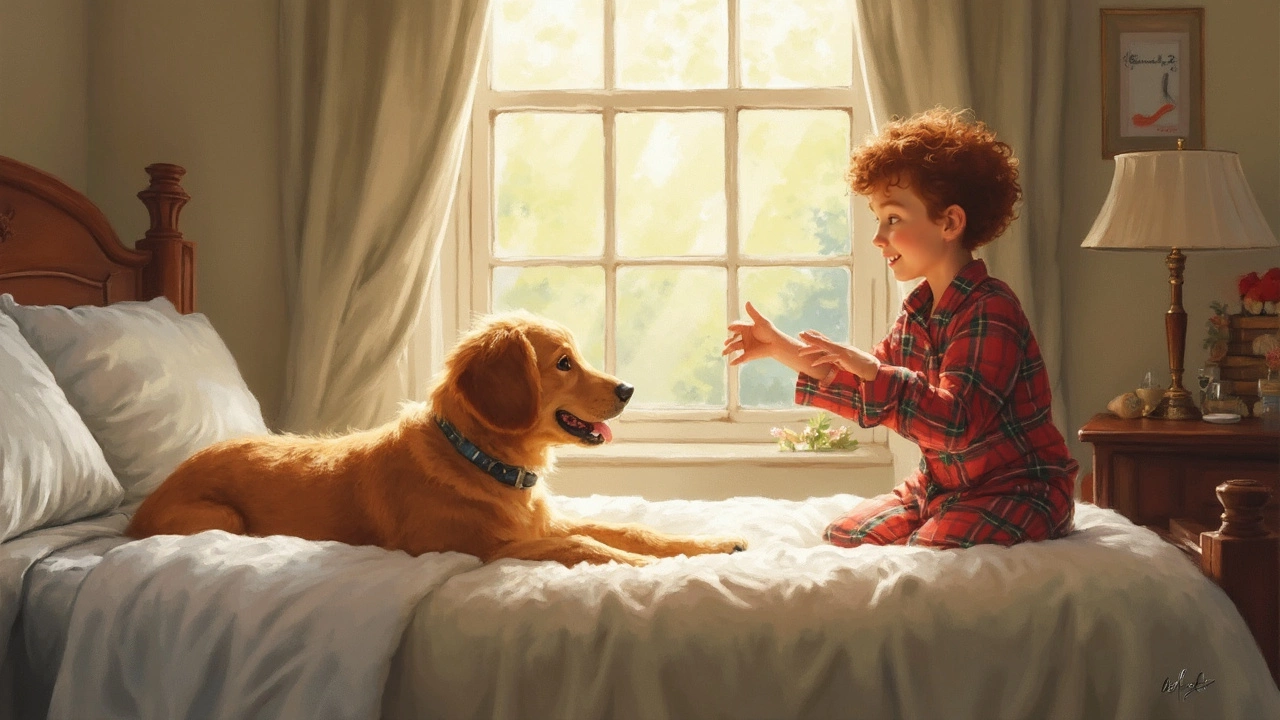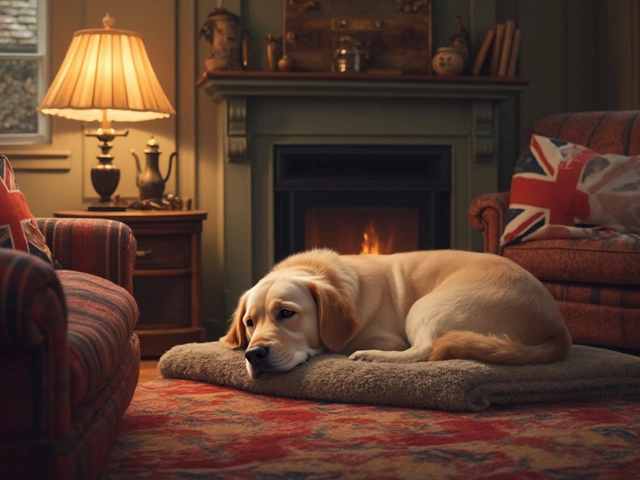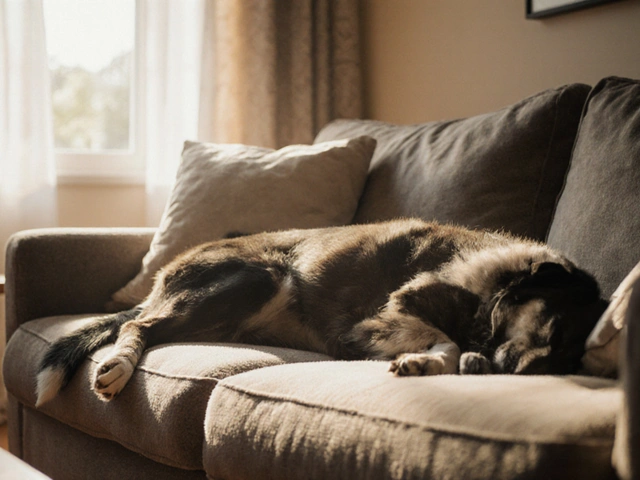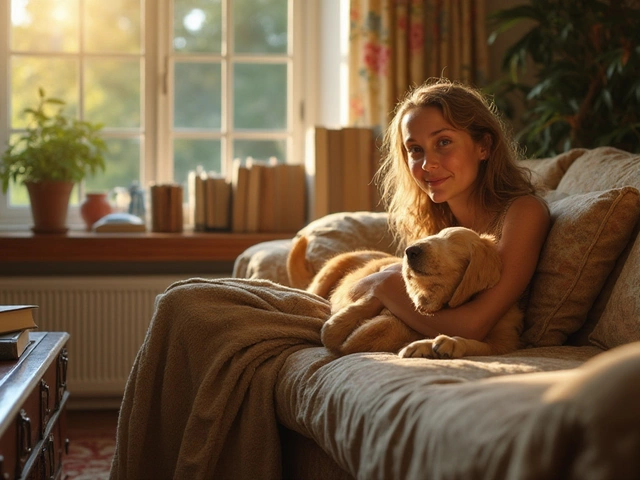Ever wake up to a furry friend hogging your pillow and wonder if it’s messing with their head? You’re not alone. Most dog owners have heard people say that letting a dog sleep in your bed will make them clingy or anxious if you’re not around. But is it actually true, or just another dog parenting myth?
The truth is a little less dramatic than the scare stories. There’s no one-size-fits-all answer, and every dog is wired a bit differently. Some pups just crave warmth and social comfort—they’d spoon all day if they could. Others are happy snuggled in their own bed right at your feet. The question is, does letting them share your mattress actually make them more dependent or set them up for separation anxiety?
Before you rearrange your entire bedtime routine or kick your dog off the bed, it helps to get clear about what separation anxiety really is and why some dogs get so worked up when you leave. Because let’s be honest, nobody wants to come home to shredded shoes and a panicked pooch. So what should you actually do at bedtime?
- Why Dogs Love Sleeping in Beds
- What Really Causes Separation Anxiety in Dogs
- Does Sharing Your Bed Fuel Anxiety?
- Tips for Healthier Sleeping Habits
Why Dogs Love Sleeping in Beds
Dogs sprawling out on your bed isn’t just about comfort. It’s got a lot to do with instinct and their bond with you. Dogs are pack animals at their core. Sharing sleeping space keeps them close to the pack, which in a modern home, means you. That feeling of togetherness is calming for both people and pups.
Warmth is a big driver, too. A dog’s normal body temperature hovers around 101 to 102.5°F, which means they love coziness. Your bed gives more warmth and softness than a lot of dog beds—and smells like their favorite human to boot.
Research backs this up. The Sleep Foundation found that more than half of American dog owners let their pets sleep with them. Dogs who sleep in beds usually show signs they feel safe and deeply connected to their families.
If you’re worried about health, most experts say it’s generally fine for healthy adults and pets. You might run into problems if you suffer from allergies or if your dog is a heavy shedder. But for most people, the benefits outweigh the mild inconvenience.
Check out these fast facts about dogs in beds:
| Reason | Why It Matters |
|---|---|
| Security | Dogs feel less stressed next to their humans |
| Warmth | Beds hold heat, especially in cooler climates |
| Bonding | Boosts trust and companionship |
| Hormones | Physical closeness raises oxytocin (the “cuddle hormone”) |
At the end of the day, a dog curled up in your blankets isn’t just being needy. They’re acting on centuries-old instincts to stick with the pack. That’s why if you ask your dog where they want to sleep, your bed almost always wins over the fancy cushion in the living room.
What Really Causes Separation Anxiety in Dogs
Separation anxiety in dogs isn’t just about a pup wanting more cuddle time. It’s an actual behavioral issue, and it usually runs a bit deeper than whether or not your dog snuggles up in your bed. At its core, separation anxiety happens when a dog can’t handle being alone or away from their favorite person—even for short periods. This goes beyond the usual excitement or protest barking when you grab your keys.
Here’s what’s really behind it: Some dogs are genetically prone to anxiety. Breeds that have been developed to work closely with humans, like border collies and labradors, can be more sensitive. Dogs rescued from tough backgrounds or shelters often struggle, especially if they’ve lost previous families. Big life changes are another trigger—a move, a new baby, a housemate moving out, or even a change in your routine, like going back to the office after working remotely for months.
How do you know if your dog has the real deal? Classic signs include barking, whining, or howling when you leave, destructive chewing, scratching at the door, or even bathroom accidents far from their usual spot. Sometimes, these pups will drool excessively or pace like they just had a huge cup of coffee.
The main causes aren’t about where your dog sleeps but about their bond with you and how much practice they get being alone. A lack of positive alone-time experience as a puppy makes a difference. Dogs who follow their humans around the house non-stop are more likely to become anxious when left alone because they’re used to non-stop company.
If you want to help your dog chill out when you leave, start small. Short, calm departures that don’t involve dramatic goodbyes help build up confidence. Make sure your dog has fun stuff to do on their own—puzzle toys and treats can do wonders. The goal is to help them feel secure whether you’re home or away. So, the bed itself isn’t the real culprit. The big factors are your dog’s personality, their previous experiences, and your daily routine—these things shape their comfort level a whole lot more than which sleep spot they pick.
For owners worried about separation anxiety, understanding these root causes is the first step to making your dog feel happier, independent, and a whole lot less stressed when you’re out living your life.

Does Sharing Your Bed Fuel Anxiety?
This is where things get interesting. Despite what you may have heard, researchers haven’t found strong proof that sharing your bed with your dog directly causes separation anxiety. There are plenty of pups who snooze in bed every night and stay totally cool when their people leave for work. On the flip side, some dogs never set paw in their owner's bed and still freak out whenever the front door shuts. So, what’s really the deal?
Most experts say that whether you let your dog sleep in your bed or not, they’ll only develop separation anxiety if they’re already wired to be anxious. Genetics, their early life experiences, and changes in your daily routine matter way more than where your pup sleeps at night. If your dog gets upset the second you're out of sight, chances are it’s because they’re struggling with being alone, not because they share your pillow.
To show you how little the dog sleep location matters for anxiety, check out this table. It sums up findings from a 2023 study that tracked dogs’ sleeping spots versus signs of anxiety when their owners left:
| Dog's Sleeping Spot | Signs of Separation Anxiety (%) |
|---|---|
| Owner's Bed | 18% |
| Dog Bed in Bedroom | 16% |
| Dog Bed in Another Room | 17% |
| Crate | 19% |
There’s barely any difference. Whether your dog is curled up at your feet or stretched out on your pillow, the chance of separation anxiety is almost the same. The real trigger is usually stress, lack of routine, or not learning to be confident when alone.
That said, there’s one thing to watch for—if your dog already depends on constant contact with you and struggles when left behind, sharing your bed dog sleep setup every night could make it tougher for them to practice being alone. If you notice this, start by helping your dog get comfy in their own space sometimes. Think of it as giving them a little independence practice instead of an abrupt cold turkey approach.
Tips for Healthier Sleeping Habits
If you want a happy dog and restful nights, it’s about balance. You don’t have to banish your pup from the bed forever, but it’s smart to set some ground rules. Here’s how to make bedtime work for both of you:
- Dog sleep routines matter. Try to keep bedtime at the same hour each night. Dogs love routine and knowing what to expect helps them feel secure, not anxious.
- Create a cozy spot just for your dog. Even if they end up in your bed, having their own bed or crate nearby gives them a safe zone. Add a worn T-shirt—your scent works wonders.
- Practice alone time during the day. Leave your dog in their bed or crate for short stretches and offer a treat or favorite toy. This helps cut down on FOMO (fear of missing out) and builds confidence.
- No drama at bedtime. If you decide your pup needs their own space, lead them quietly to their bed. No scolding or fuss. Praise calm behavior and stick with it.
- Consider the whole family. If your dog sleeps with you, it’s got to work for everyone in the bed—human or furry.
Curious if your habits stack up to what other dog folks do? Check out these stats from a survey of 1,000 dog owners:
| Habit | Percent of Owners |
|---|---|
| Let dog sleep in bed every night | 45% |
| Dog has own bed in owner’s room | 30% |
| Dog sleeps in separate room/crate | 25% |
If you ever see signs like excessive whining, chewing, or pacing when you try new habits, ease up and take smaller steps. Gradually increasing your dog's independence—never making bedtime feel like punishment—goes a long way. Pay attention to what actually helps your dog feel chill. When bedtime is calm, sleep goes smoother for everyone, paws down.







